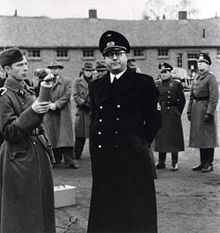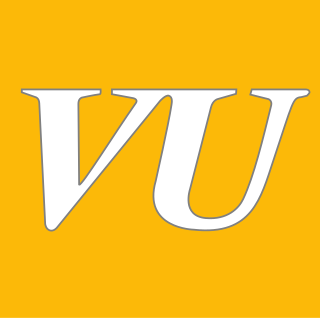
People's Union was a Flemish nationalist political party in Belgium, formed in 1954 as a successor to the Christian Flemish People's Union.

The Rex Popular Front, or simply Rex, was a far-right Catholic authoritarian and corporatist political party active in Belgium from 1935 until 1945. The party was founded by a journalist, Léon Degrelle, It advocated Belgian unitarism and royalism. Initially, the party ran in both Flanders and Wallonia, but it never achieved much success outside Wallonia and Brussels. Its name was derived from the Roman Catholic journal and publishing company Christus Rex.
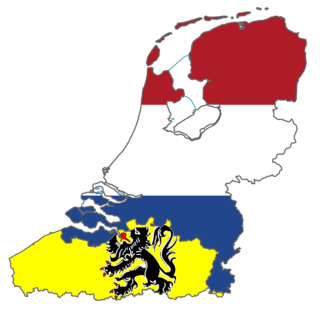
Greater Netherlands is an irredentist concept which unites the Netherlands, Flanders, and sometimes Brussels. Additionally, a Greater Netherlands state may include the annexation of the French Westhoek, Suriname, formerly Dutch-speaking areas of Germany and France, or even the ethnically Dutch and/or Afrikaans-speaking parts of South Africa, though such variants are mostly limited to far-right groups. A related proposal is the Pan-Netherlands concept, which includes Wallonia and potentially also Luxembourg.

The Yser Towers are a monument complex near the Yser river at Diksmuide, West Flanders in Belgium. The first tower was built in 1928–30 to commemorate the Belgian soldiers killed on the surrounding Yser Front during World War I and as a monument to Christian pacifism. However, it subsequently became an important political symbol for the Flemish Movement and was destroyed in 1946 as a result of its association with Flemish nationalist collaboration in German-occupied Belgium in World War II. The current tower was rebuilt alongside the remains of the original and copied its design. It was finished in 1965. It remains a site of political significance to Flemish nationalists and is the center for their annual Yser Pilgrimage (IJzerbedevaart).
Reimond Tollenaere was a member of the Vlaamsch Nationaal Verbond (VNV), a right-wing Flemish nationalist party in Belgium. He was an active collaborator with Nazi Germany during World War II.

The Flemish Legion was a collaborationist military formation recruited among Dutch-speaking volunteers from German-occupied Belgium, notably from Flanders, during World War II. It was formed in the aftermath of the German invasion of the Soviet Union and fought on the Eastern Front in the Waffen SS alongside similar formations from other parts of German-occupied Western Europe.

Verdinaso, sometimes rendered as Dinaso, was a small fascist political movement active in Belgium and, to a lesser extent, the Netherlands between 1931 and 1941.
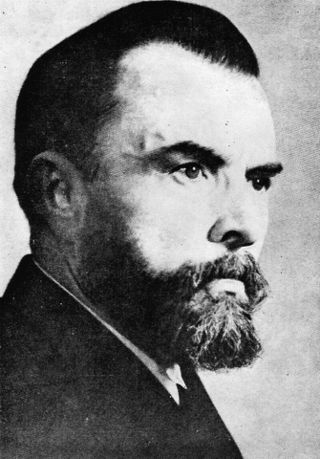
Staf De Clercq was a Flemish nationalist collaborator, co-founder and leader of the Flemish nationalist Vlaamsch Nationaal Verbond.
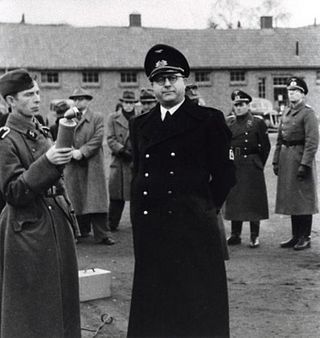
Hendrik Jozef Elias was a Belgian politician and Flemish nationalist, notable as the leader of the Vlaams Nationaal Verbond between 1942 and 1944.

Wies Moens was a Belgian literary historian, poet and Flamingant activist. He was also a founding member of the right-wing Verdinaso movement.

Julius Hoste Jr. (1884–1954) was a Belgian businessman and liberal politician.

The Military Administration in Belgium and Northern France was an interim occupation authority established during the Second World War by Nazi Germany that included present-day Belgium and the French departments of Nord and Pas-de-Calais. The administration was also responsible for governing the zone interdite, a narrow strip of territory running along the French northern and eastern borders. It remained in existence until July 1944. Plans to transfer Belgium from the military administration to a civilian administration were promoted by the SS, and Hitler had been ready to do so until Autumn 1942, when he put off the plans for what was intended to be temporary but ended up being permanent until the end of German occupation. The SS had suggested either Josef Terboven or Ernst Kaltenbrunner as the Reich Commissioner of the civilian administration.
Josephus Alphonsus Marie François was a Belgian Flemish far right politician and Nazi collaborator.
Declercq is a Dutch occupational surname, meaning "the clerk", common in the Belgian province of West Flanders. It is a concatenation of the even more common name De Clercq that is quite specific to East Flanders. People with this name include:
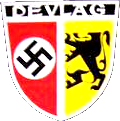
The Duitsch-Vlaamsche Arbeidsgemeenschap, better known as DeVlag, was a small radical pro-Nazi organization active in Flanders during the German occupation of Belgium. It was founded in 1936 by academics Jef Van de Wiele and Rolf Wilkening as a cultural association to strengthen the exchange of students and professors between the universities of Leuven and Cologne.
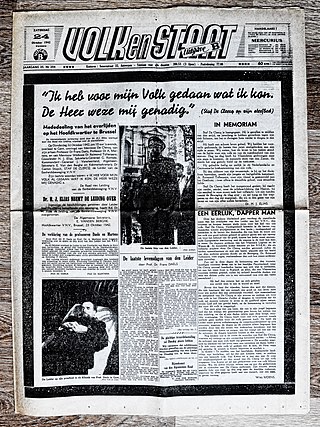
Volk en Staat was a Flemish daily newspaper between 1936 and 1944, linked to the Fascist Flemish National League party. It was founded on 15 November 1936 and banned shortly after the liberation of Belgium from German control in 1944.

The Abbeville massacre took place during the Battle of France in the French town of Abbeville on 20 May 1940. 21 political prisoners, mainly foreign nationals, were killed by the French soldiers who feared that they might become possible fifth columnists or collaborators with Nazi Germany.

The Special Forestry Platoon, nicknamed the woodchoppers of the Orne, was a non-combat penal military unit of the Belgian Army during World War I. As its name suggests, the unit specialized in forestry, specifically woodchopping, conducted as a form of penal labour.
The Flemish Guard was a collaborationist paramilitary formation which served as an auxiliary police in parts of German-occupied Belgium during World War II. It was founded as an independent formation in May 1941 at the initiative of the Union of Flemish Veterans and the Flemish National League. Both associated with the pre-war Flemish Movement, the VNV soon emerged as the largest collaborationist faction in Flanders during the occupation. In propaganda, the Flemish Guard was depicted as the police force of a future independent Flanders. It was distinct from the Flemish Legion, formed by the VNV in July 1941, to participate in the German invasion of the Soviet Union.

Pan-Netherlands, sometimes translated as Whole-Netherlands, is an irredentist concept which aims to unite the Low Countries into a single state. It is an example of Pan-Nationalism.


